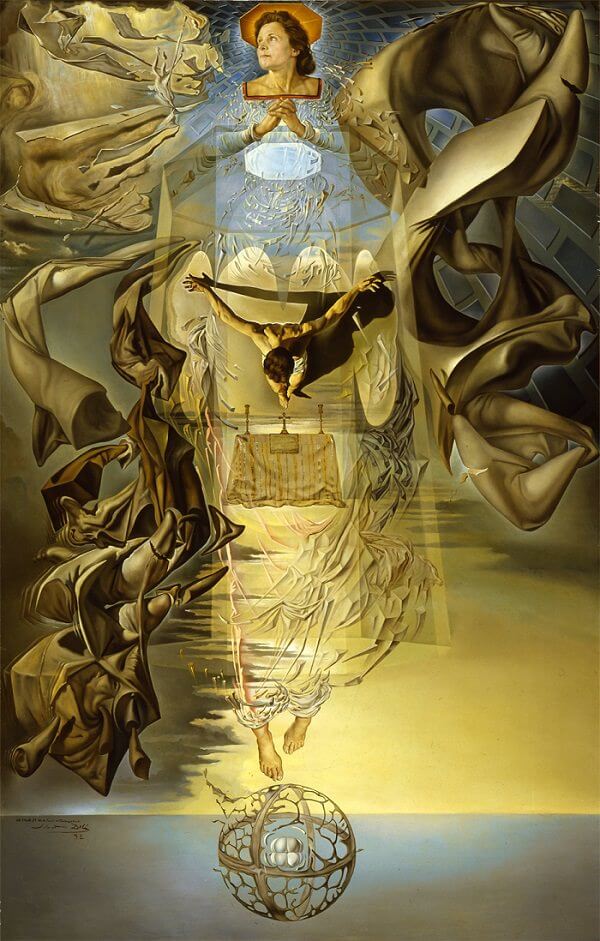Lapis-Lazuli Corpuscular Assumption, 1952 by Salvador Dali

Lapis-lazuli Corpuscular Assumption repeats several of the images seen in Raphaelesque Head Exploding (1951). The outline of the Pantheon can be seen, the top of which acts as a halo to Gala's head. Like the Madonna, Gala is exploding, her body delineated by the rhinoceros horns that swirl about the painting.
Above an altar is the figure of the crucified Christ. The model for Christ was a boy from Cadaques called Juan whom the Dalis were very close to, treating him like an adopted son. The boy's body forms a triangle, a shape repeated by Gala's arms and head above. Dali had a glass floor put in his studio so that he could look up or down on his models in order to recreate this perspective.
Dali saw this painting as an interpretation of the philosopher Nietzsche's idea of natural strength, although here we have Gala as a "superwoman," ascending to heaven through her own innate force. In a later explanation of the work, Dali wrote that Gala was rising to heaven with the aid of "anti-matter Angels." The painting can be interpreted as Gala's body either disintegrating or integrating.
A far more straightforward link with contemporary avant-garde art can be discerned in Lapis-lazuli Corpuscular Assumption, which is obviously influence by the vigorous, expressive brushstrokes of American Abstract Expressionists such as Jackson Pollock























